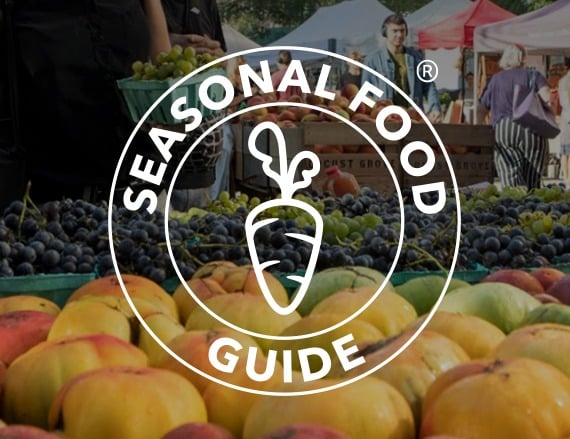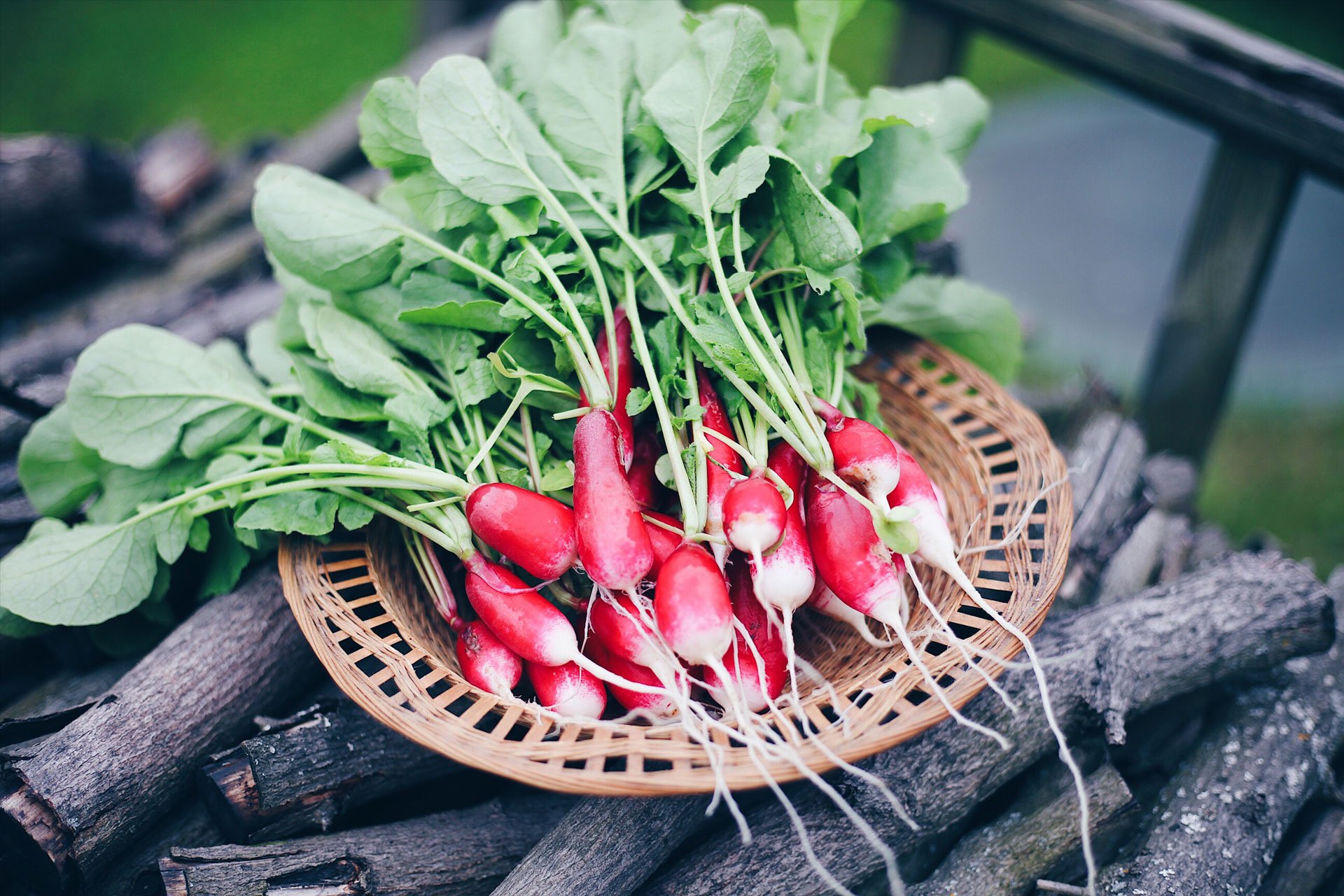Real Food Encyclopedia | Radish
Radishes come in a huge number of shapes, colors and sizes, but all belong to a single species, Raphanus raphanistrum. Most of the radishes grown and sold in the U.S. are red spring radishes, which are most commonly used in salads and as garnishes, but other varieties are used in all kinds of dishes worldwide. As a crop, radishes are easy and reliable to grow and one of the earliest veggies to appear in the spring, making them a great choice for home gardeners.
Did you know?
- Herodotus, the ancient Greek historian, writes in his book “An Account of Egypt“: “On the pyramid it is declared in Egyptian writing how much was spent on radishes and onions and leeks for the workmen….” Herodotus’ accounts are sometimes suspect, but it seems reasonable that the pyramid builders were given a ration of them and other vegetables.
- In Oaxaca, Mexico, December 23rd is the Night of the Radishes (Noche de Rábanos), where local artisans carve crazy stuff out of radishes.
What to look for when buying radishes:
Table radishes are usually round and no larger than ping-pong balls (very large varieties, unless bred to be large, tend to become woody). The most common type of table radish is red, but purple, red-and-white, white and pink varieties are becoming much easier to find at the market. French Breakfast radishes are oblong, reddish-pink at the top and white at the bottom.
Daikon radishes, an Asian variety, are typically very large — they can reach a foot in size — and white, with a cylindrical shape. Other Asian varieties are larger than table radishes, round and squat; some are green on the outside. An heirloom variety of daikon, the Watermelon radish (aka Chinese Red Meat or the more poetically named Beauty Heart), is notably beautiful and delicious its white or light green exterior gives way to a hot pink interior, resembling — what else? A watermelon! Black radishes are what you might expect: dark black on the outside, and usually white on the inside. They may be round or more carrot-shaped.
Look for radishes with minimal blemishes and absolutely no mushy spots. Table radishes should have smooth skin. If their tops are still attached, look for perky greens with minimal wilting or yellowing.
Sustainability of radishes
Cultivation
All radishes are classified as Raphanus raphanistrum, but the plant varies wildly in root color and size. They are usually divided into a few major types:
- Table or “European” radishes, which generally have small roots (usually red, pink, white, purple or a combination) and are often eaten fresh;
- Asian radishes, including the giant daikon which are commonly pickled or cooked;
- Black radishes (also called Spanish radishes), typically winter varietals with a strong, peppery bite; and
- Fodder radishes, grown as animal feed. Radish varieties are also now being bred as a cover crop for organic farming systems.
Most varieties are very easy to cultivate from seed and mature very quickly in the garden — some varieties taking only a couple of weeks from seed to harvest (winter varieties take a bit longer). Hot weather and periods of dryness makes a spicier radish; their pungency is due to mustard oil. California, Florida and Michigan produce the most radishes in the U.S.
Pesticides
Thankfully, radishes don’t appear on the Environmental Working Group’s latest Guide to Pesticides in Produce. They aren’t terribly susceptible to pests, in part because many varieties are so fast-growing, but if you’re concerned about pesticides, check with your local farmer about his or her growing practices.
Seasonality
If you’re lucky, you should be able to find different varieties nearly year-round. The table radishes we are most familiar with in the U.S. are spring veggies, available in most places from April through June. Summer radish varietals also exist. Asian types, like daikon, are available in the fall and winter, and black radishes are typical winter fare, as they can be cold-stored for long periods of time.
Eating radishes
Storing
Radishes hold up well in the refrigerator. They can be stored for at least a week in your crisper drawer wrapped loosely in a kitchen towel or paper towels.
Cooking
Every single part of the radish is edible — from root to leaf to seedpod. They are delicious raw, but they can also be fried, braised, steamed and roasted. Cooking radishes reduces some of their peppery bite (but also reduces their Vitamin C content).
Radishes pair deliciously with butter and creamy cheeses (like goat), with onions and chives, and with citrus fruits and their juice. You can chop them up finely and add to any mayo-based salad (i.e., potato, tuna); they add a much-needed crunchy bite. They also taste great in salads with nutty grains like farro and quinoa. Mexican cuisine employs raw table varieties to add a crunchy, peppery accent to tacos, salads, sandwiches (tortas) and other dishes. If you’re hell-bent on cooking your table radishes, braising or roasting is the way to go, like these roasted radishes with brown butter and radish tops. In India, daikons are eaten in a bunch of different ways, even in curries. Also delicious: inside a Vietnamese banh mi sandwich or pickled in Korean kimchi.
Or, make crispy chips out of them — like these Watermelon radish chips or Black Sabbath Black Radish Chips.
But wait! Don’t throw away those radish tops! Table radishes have delicious leaves, so make a radish top pesto out of them or sauté them like other tender greens. And radish seedpods are becoming more and more common at farmers’ markets. They’ve got the same peppery bite as the root, just juicier and snappier.
Preserving
Radishes don’t freeze well unless they’re in a preparation like radish butter, which can be wrapped and frozen. But really, pickling them is definitely the way to go. Here’s daikon and carrot pickle (classic banh mi sandwich stuffer), daikon kimchi and a whole slew of pickled radish recipes from Punk Domestics.
Nutrition
Radishes are very low in calories and high in Vitamin C. They are decent sources of folate and potassium, too.
Top photo by Nadia/Adobe Stock .


